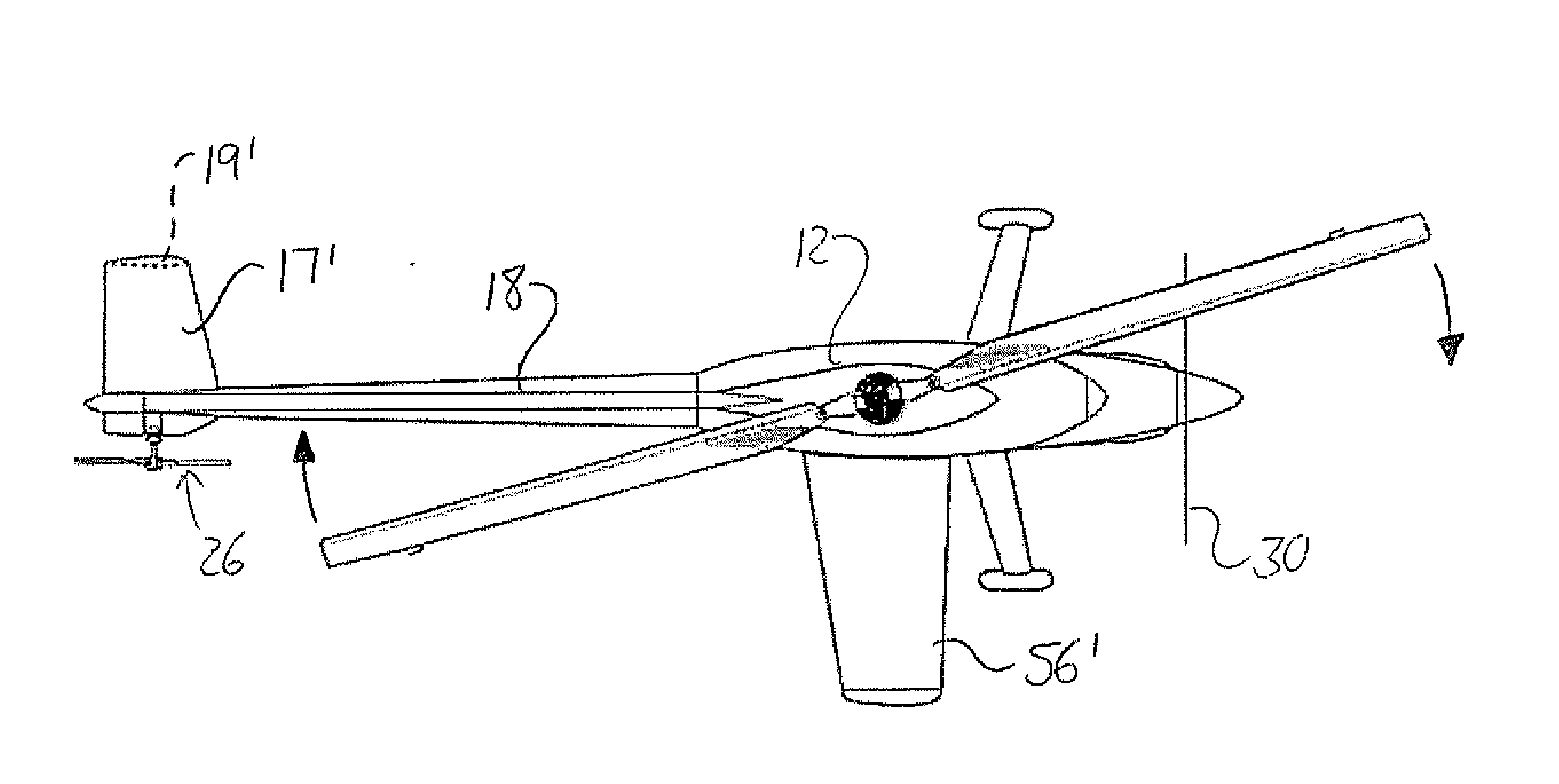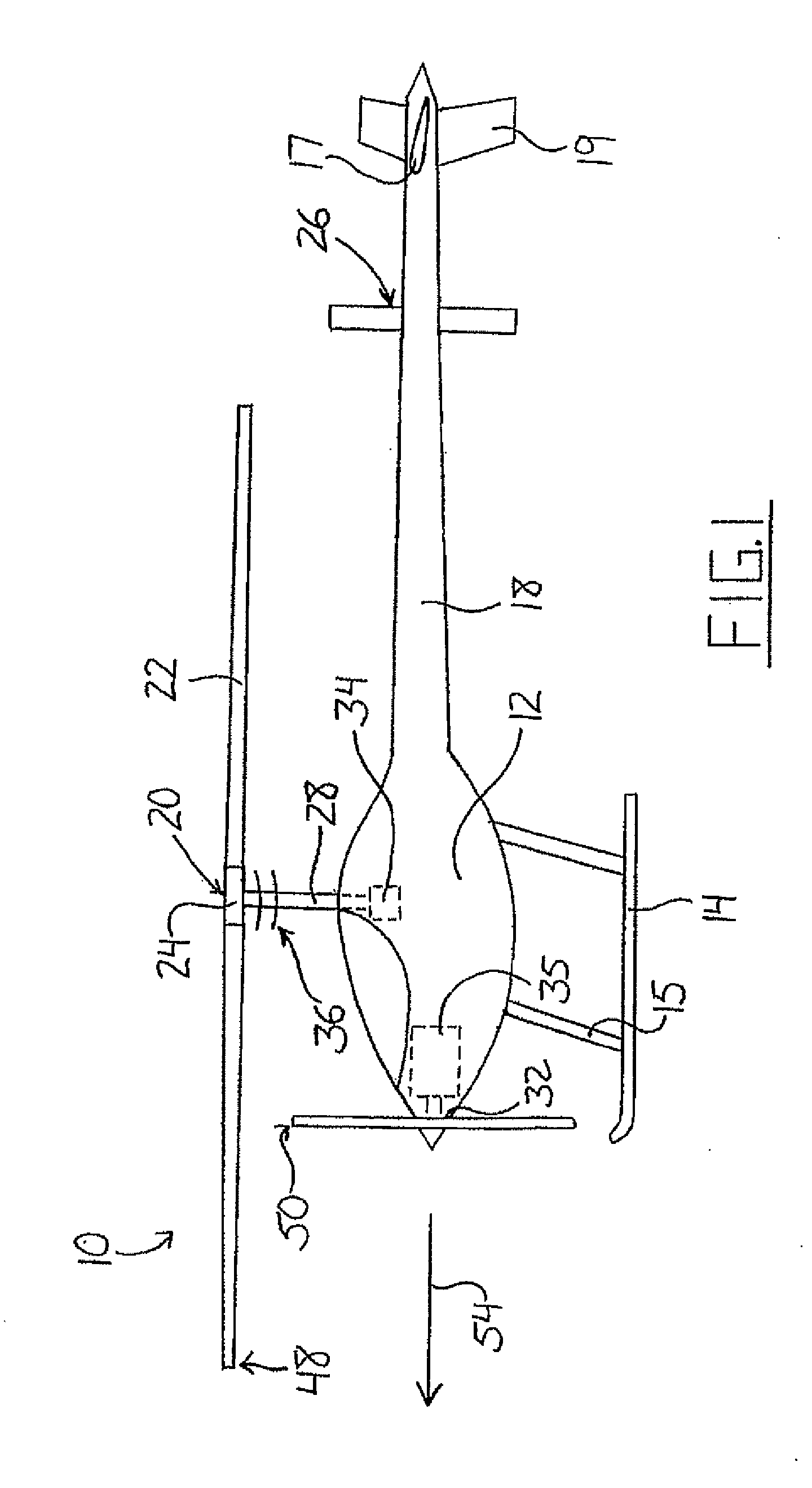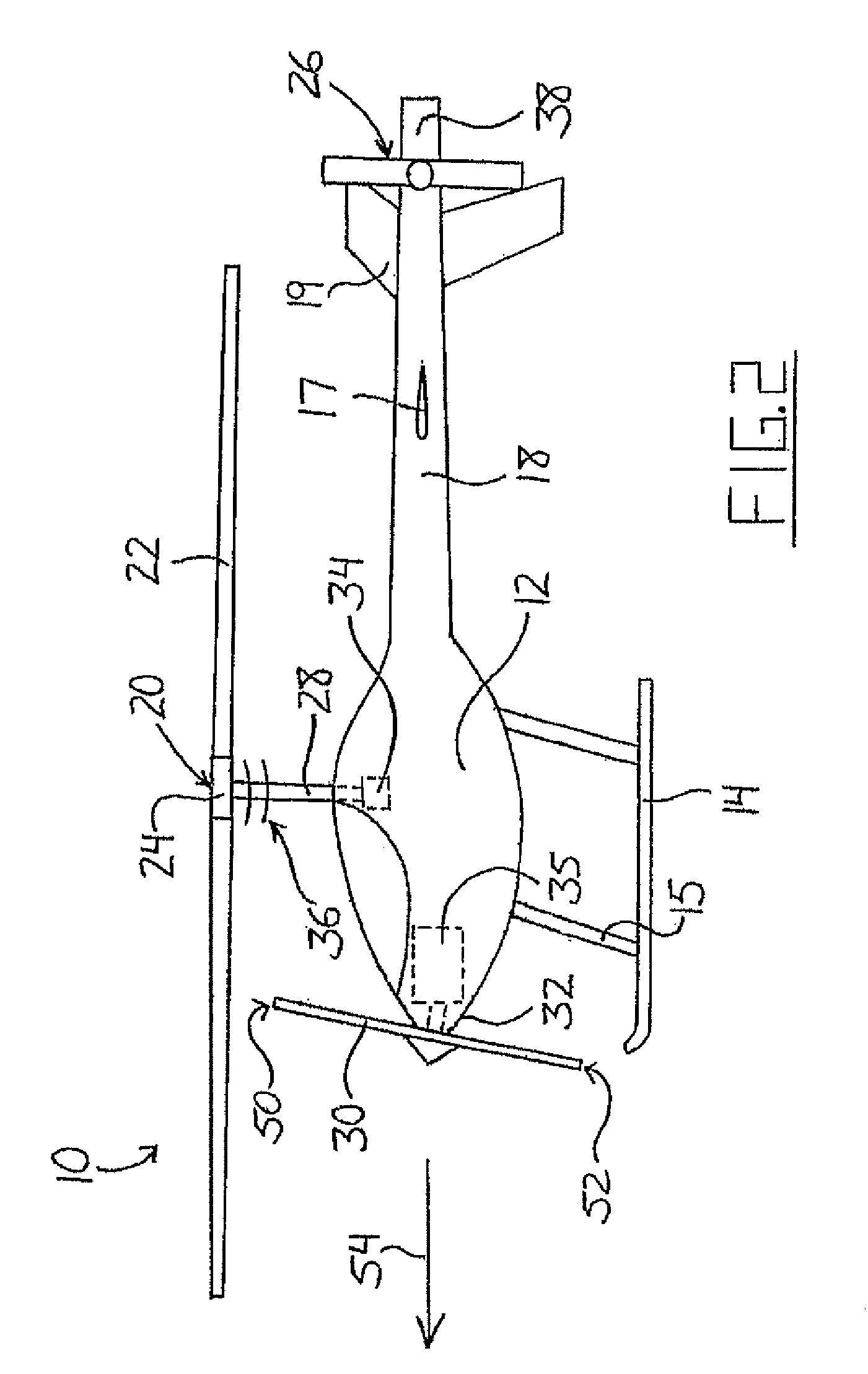Aircraft with Helicopter Rotor, Thrust Generator and Assymetric Wing Configuration
a thrust generator and helicopter technology, applied in the field of helicopters, can solve the problems of blade stalling, blade stalling, loss of smooth laminar airflow over the surface of the blade, and the conventional helicopter, which offers drastically improved maneuverability over the airplan
- Summary
- Abstract
- Description
- Claims
- Application Information
AI Technical Summary
Benefits of technology
Problems solved by technology
Method used
Image
Examples
first embodiment
As shown in FIG. 1, the present invention features the propeller supported for rotation within a plane generally perpendicular to the plane of rotation of the main rotor. The aircraft may be flown such that the main rotor 20 rotates about a vertical axis, thereby providing only vertical lift. This differs from a conventional helicopter wherein the cyclic control is used to create more lift during a rear half of the main rotor's rotation nearest the tail than in a front half of the main rotor's rotation nearest the nose, thereby causing the helicopter to tilt nose down such that the rotation plane of the main rotor is angled from a horizontal orientation and its rotation axis is correspondingly angled from a vertical orientation. This cyclical action is combined with an increase in power and collective to the rotor. These actions angle and increase the force produced by the main rotor from a vertical direction such that both vertical lift and forward thrust components are created to ...
second embodiment
As seen in FIG. 2, the propeller 30 of the second embodiment is not mounted on the nose 32 so as extend in a vertical plane parallel to the main rotor shaft 28 and normal to a longitudinal axis of the fuselage 12. The propeller 30 is tilted rearward such that a lowest point in its rotation 52 is disposed forward of the highest point in its rotation 50. In other words, the axis of the propeller 30 has been rotated downward about its front end from a longitudinal axis of the fuselage 12 in a vertical plane by a small angle.
A radio controlled prototype of the second embodiment of the present invention was able to achieve forward speeds estimated at approximately twice what was attainable before the installation of the nose mounted propeller and a respective powerplant. However, the aircraft was somewhat difficult to control in its upper velocity range. It is contemplated however that control at these higher speeds may be improved with flight experience as the differences in flight char...
fifth embodiment
The fifth embodiment aircraft is piloted in the same manner the fourth embodiment. The main rotor, as viewed from above, rotates in the same one of a clockwise or counterclockwise direction as the propeller 30, as viewed from behind, and the rotational plane of the propeller is perpendicular to the longitudinal axis of the aircraft, and thus generally perpendicular to the rotational plane of the main rotor. The main helicopter rotor is driven at all times during flight to provide lift regardless of the aircraft's attained velocity, even at high speed forward cruising where forward thrust is provided by the propeller 30 instead of the main rotor, unlike prior art compound helicopters where the rotor is unloaded at higher speeds to rely on a large wing span on both sides of the fuselage for sufficient lift. The single primary wing 56′ on the retreating blade side of the fuselage creates a degree of wing-provided lift that is unmatched on the opposite advancing-blade side of the fusela...
PUM
 Login to View More
Login to View More Abstract
Description
Claims
Application Information
 Login to View More
Login to View More - R&D
- Intellectual Property
- Life Sciences
- Materials
- Tech Scout
- Unparalleled Data Quality
- Higher Quality Content
- 60% Fewer Hallucinations
Browse by: Latest US Patents, China's latest patents, Technical Efficacy Thesaurus, Application Domain, Technology Topic, Popular Technical Reports.
© 2025 PatSnap. All rights reserved.Legal|Privacy policy|Modern Slavery Act Transparency Statement|Sitemap|About US| Contact US: help@patsnap.com



